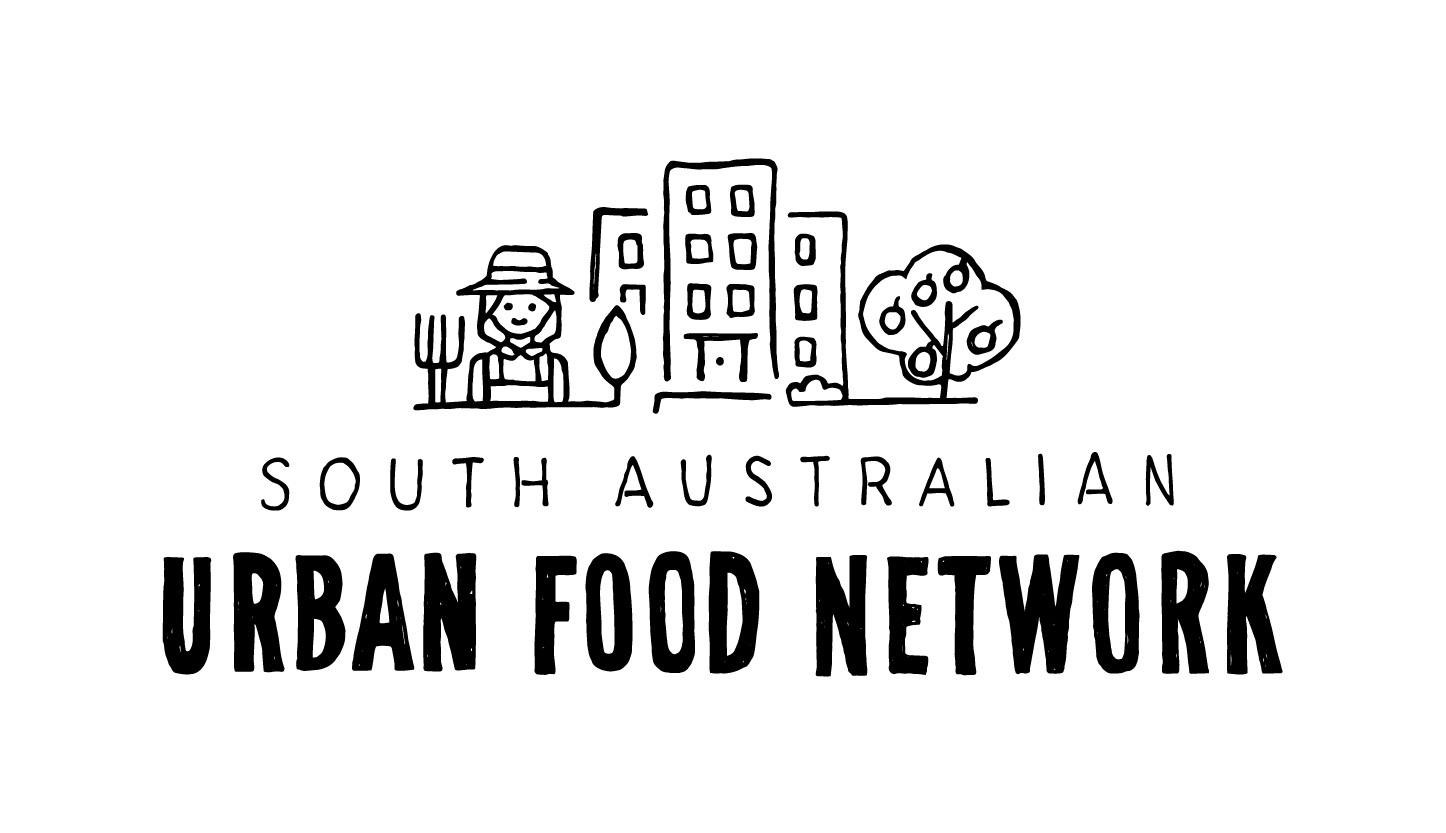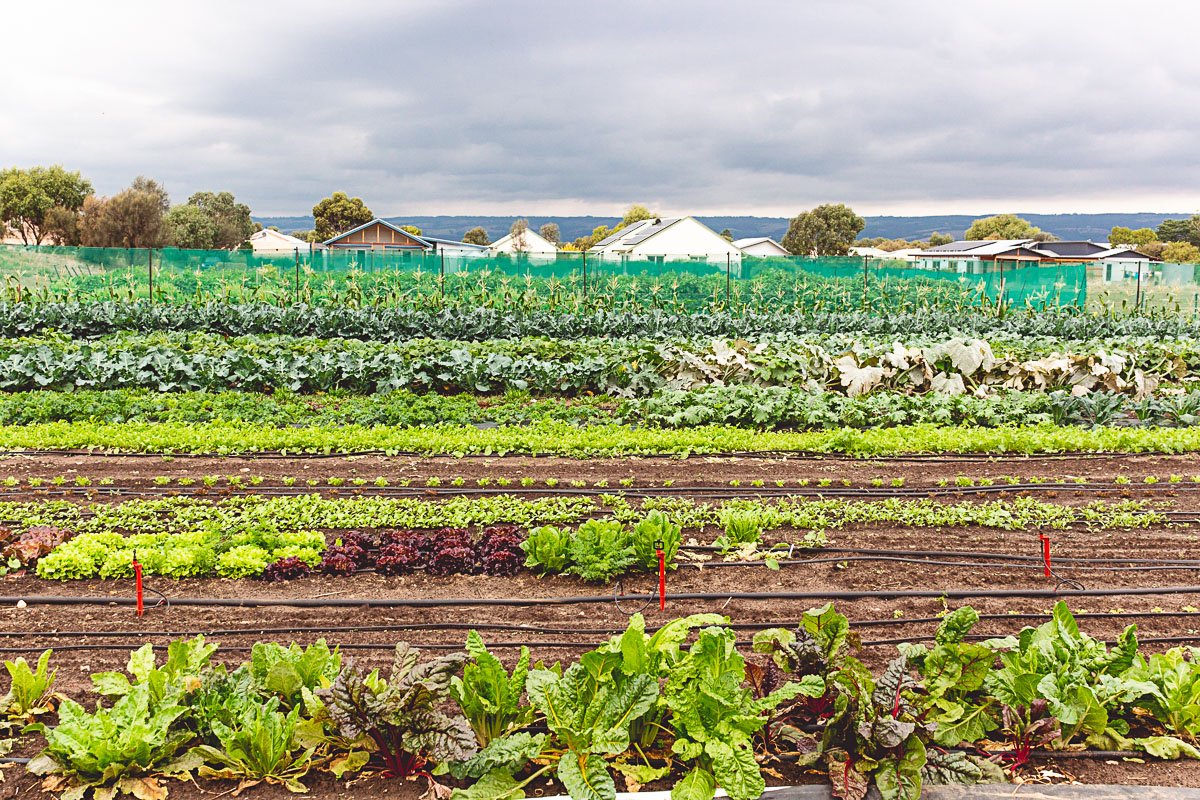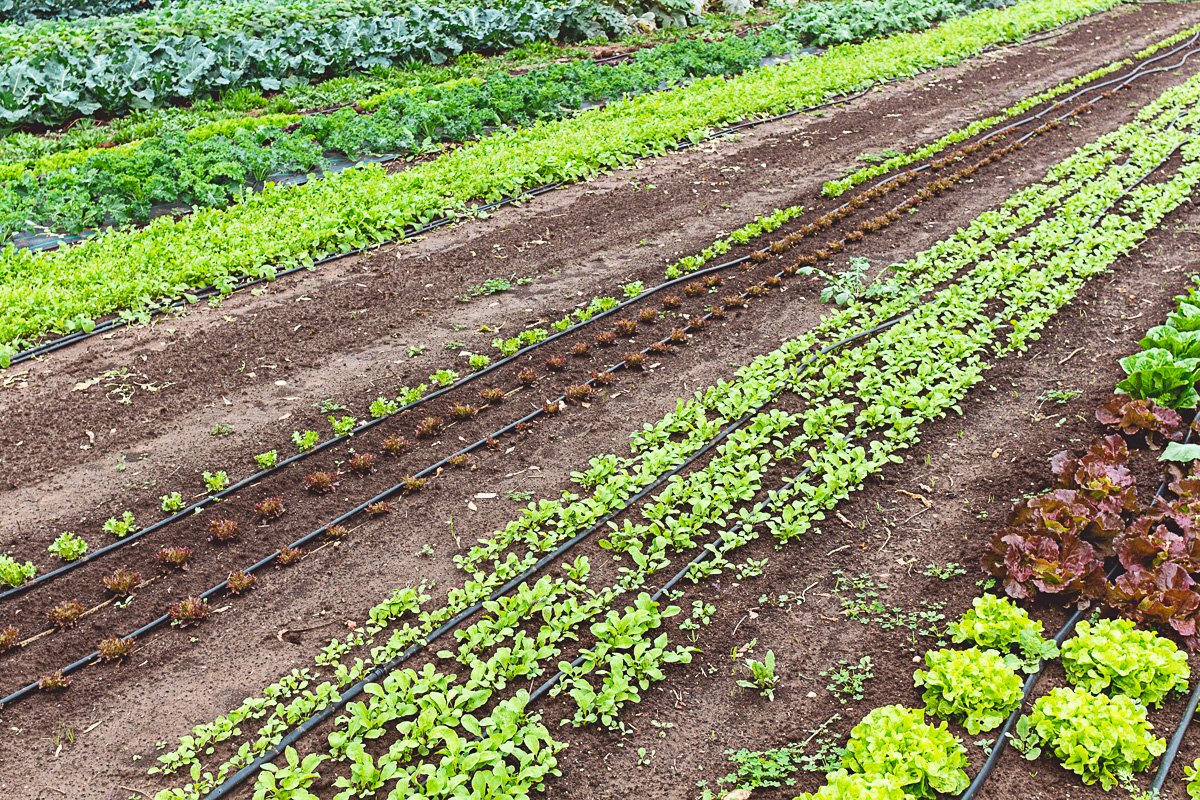Village Greens of Willunga Creek – Aldinga, Fleurieu Peninsula
Since 2014, young farmers have been growing brilliant organic produce from a small market garden beside the Aldinga Arts EcoVillage. Here, we chat to managers Nat Wiseman and Lucy O’Connell about how they make it work.
The key stats
Year established: 2014
Location: Willunga Creek, near Aldinga, Fleurieu Peninsula, South Australia
Land size: 1-acre market garden on leased land in the Aldinga Arts Ecovillage
Average annual rainfall: 598.8mm per annum (since 2000)
Soil type: Heavy clay over limestone
Main energy sources: Human power (for most of the work!), sunlight (for growing the plants), fossil fuels (for tractors and coolroom)
Main water sources: Mains water
Staff and volunteers: 4 full-time equivalent staff (including manager)
Main production: Salad greens, colourful heirloom produce and over 40 types of vegetables
Markets: Produce is sold to the local Willunga Farmers Market, restaurants and via home delivery.
What’s the project, in a nutshell?
Village Greens is a small, diversified organic market garden situated on the peri-urban fringe of Adelaide on the Fleurieu Peninsula, an hour south of Adelaide.
Says Nat: “We are young farmers who are passionate about sustainable agriculture and the blossoming local and fair food movement in Australia.”
The farm focuses on efficient small-scale market gardening techniques, inspired by the likes of Eliot Coleman, Jean-Martin Fortier and Ben Hartman.
While the farm is not certified organic, they utilise organic practices that support soil and plant health and produce nutrient-dense, delicious food.
“Village Greens emphasises the importance of small-scale, sustainable farming that not only grows great food, but supports and builds great communities too,” Nat says.
How did this all get started?
The team broke ground in January 2014 after a successful crowdfunding campaign raised $17,000, allowing the purchase of essential tools and infrastructure.
“The crowdfunding campaign was actually really full-on to organise and promote, and then follow up with prizes and gifts,” Nat recalls. “It was definitely worthwhile but it’s important to be aware of the commitment before you start one. It’s not just – you put it out there and get all this money and then walk away. It’s quite a big project”
For anyone considering a similar path to getting started, Nat recommends locking in finances from a few willing friends or family members first, if possible.
“Once people see that you’ve already raised a few thousand, it gets the momentum going,” he says.
Any tips for those wanting to start something similar?
“Start small” is Nat’s biggest piece of advice to any aspiring urban farmer.
“It’s better to have amazing production on 10 square metres than really bad production on 100. And you can apply that logic to any scale,” he says.
“People underestimate what they can grow in a small area. As your skills improve and you establish yourself in particular markets, that’s when you can expand.”
“Don’t make assumptions about your markets, like: “Everyone eats, therefore people must need my produce.” Everyone is already eating somewhere else. You need to identify market gaps and unmet demand, and work to fill these.”
Nat’s other key learnings and tips are:
Make sure you have enough capital to start! (For example: use crowdfunding, family loans, etc.)
Building the three “S’s” – soils, skills and sales, takes time, so don’t expect big returns in the first few years.
Do an internship for at least a year, preferably on different farms at different scales (combined with lots of reading!) in order to learn the basics and minimise mistakes in the field.
What’s the biggest challenge so far?
Finances are a constant challenge, with Nat determined to offer a fair, living wage for all of his workers – himself included.
“I’m looking at paying myself maybe $30,000 a year if I’m lucky, for working 50 hours a week,” he says. “Farming is the same as for any small business owner, you put in so many hours and don’t see much return in early years.
“At the same time, there’s a lot of non-financial benefits – we get all our veggies for free, being able to work outside, getting lots of exercise.
“But a living wage is important – at the end of the day, that’s what’s going to convince people that it’s a worthwhile venture and opportunity. That’s the struggle at the moment.”
What’s the best part?
Nat says there’s nothing like being directly connected to the people who eat the food his farm grows. “Seeing people be so grateful and appreciative of what we do, that’s definitely the best part.”
He also loves being able to work outside in nature, the flexibility and freedom of the job, and the mental challenge of continual improvement.
Being part of a project that regenerates the land is also hugely rewarding.
“We still do use fossil fuels for our tractors and electricity for our cool rooms so it’s not like we’re saints in terms of our environmental impact, but it’s obviously a lot less than a large scale conventional farm with all of those food miles and transport logistics,” he says.
“The local markets are a big thing for us. Just being able to haul that produce 10mins up the road to the farmers’ market on a Saturday is huge.”
Tell us about the future - what’s next?
The Village Greens team have plenty of plans for the years ahead, including:
Scaling up – expanding our land area to 1.5 acres as demand grows.
Getting lean! Increasing efficiency by investing in tools, processes and systems to reduce costs and make the work more enjoyable and profitable.
Collaborating with other young farmers to increase market access for everyone involved, and share knowledge and tools.
And while Village Greens of Willunga Creek launched with a crowdfunding campaign, Nat says they’ve more recently moved to a crowd-lending model to raise $20,000 for an expanded cool room.
“We contacted a handful of friends who are keen to loan money and then get repaid with a bit of interest,” he explains. “Obviously there’s a higher risk in lending to us than rather than keeping your money in the bank, but we can also offer a better return than interest on bank savings.
“I think that’s the challenge of small business – there’s so many small farmers I know who could do with $20,000 to $50,000 worth of investment. It’s nothing for a bank, but they see that risk too high, so no one’s really willing to lend. So that community-lending model is a way forward.
“Rather than leaving your money in a bank that would then be investing in who knows what, it’s a really local way of supporting things. I think it’s a really exciting space.”
Ways to get in touch
Website: villagegreens.com.au
Facebook: @villagegreensofwillungacreek
Instagram: @villagegreensofwillungacreek







